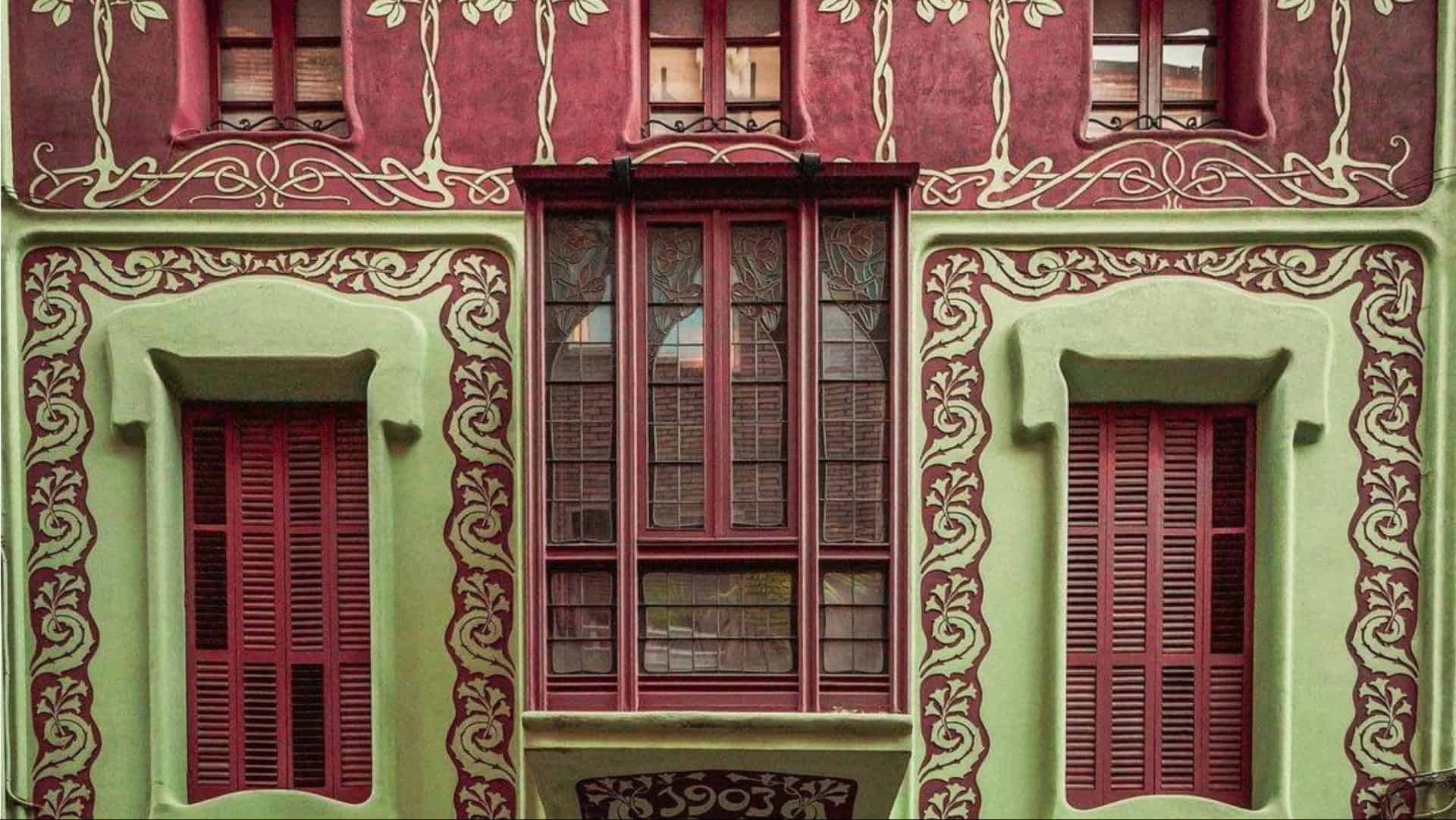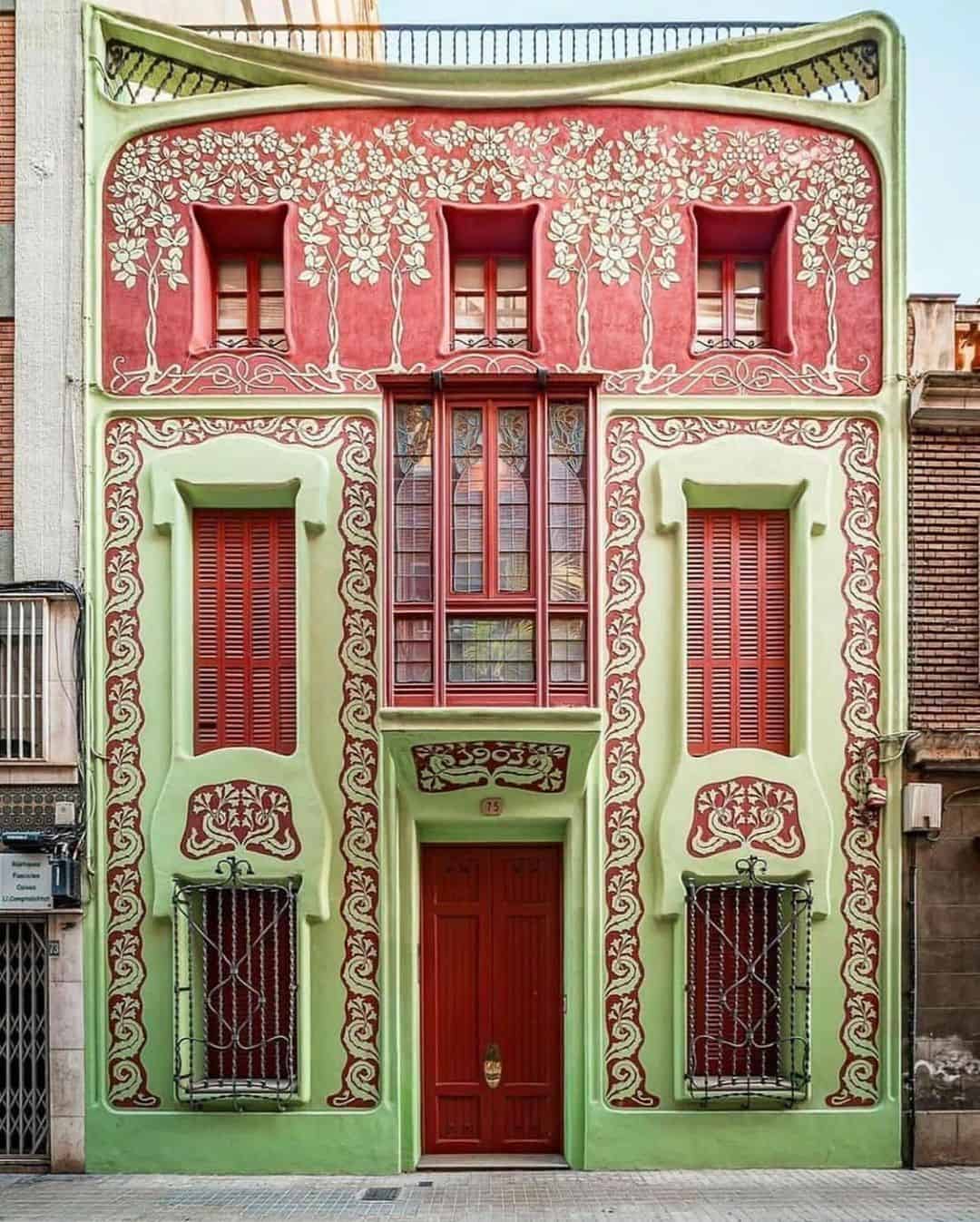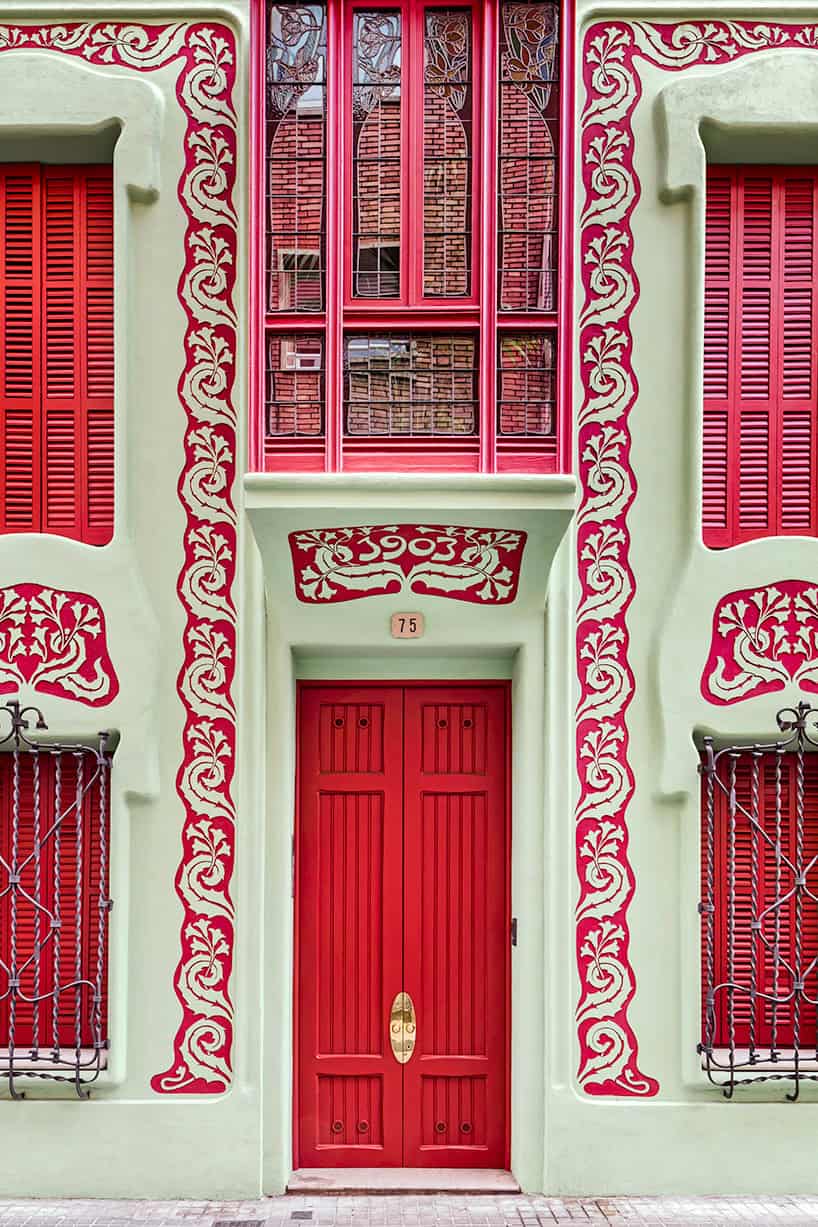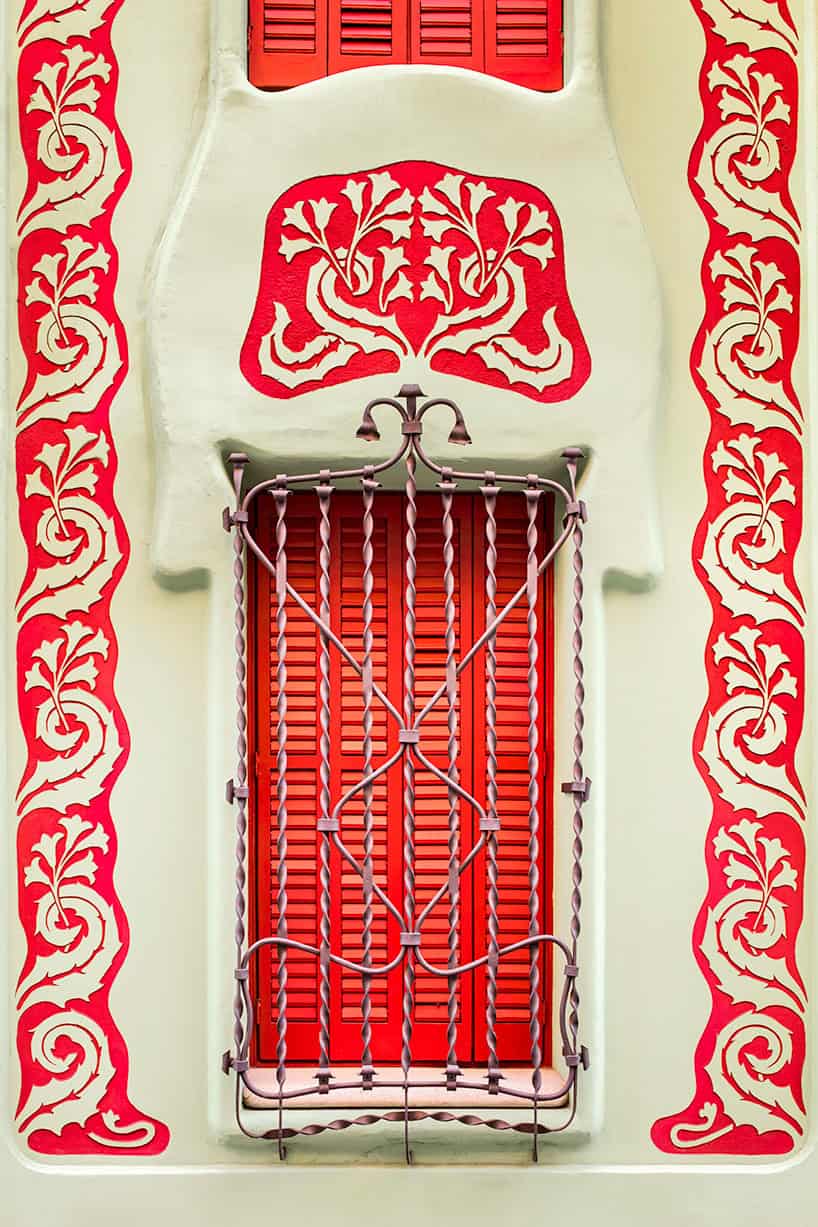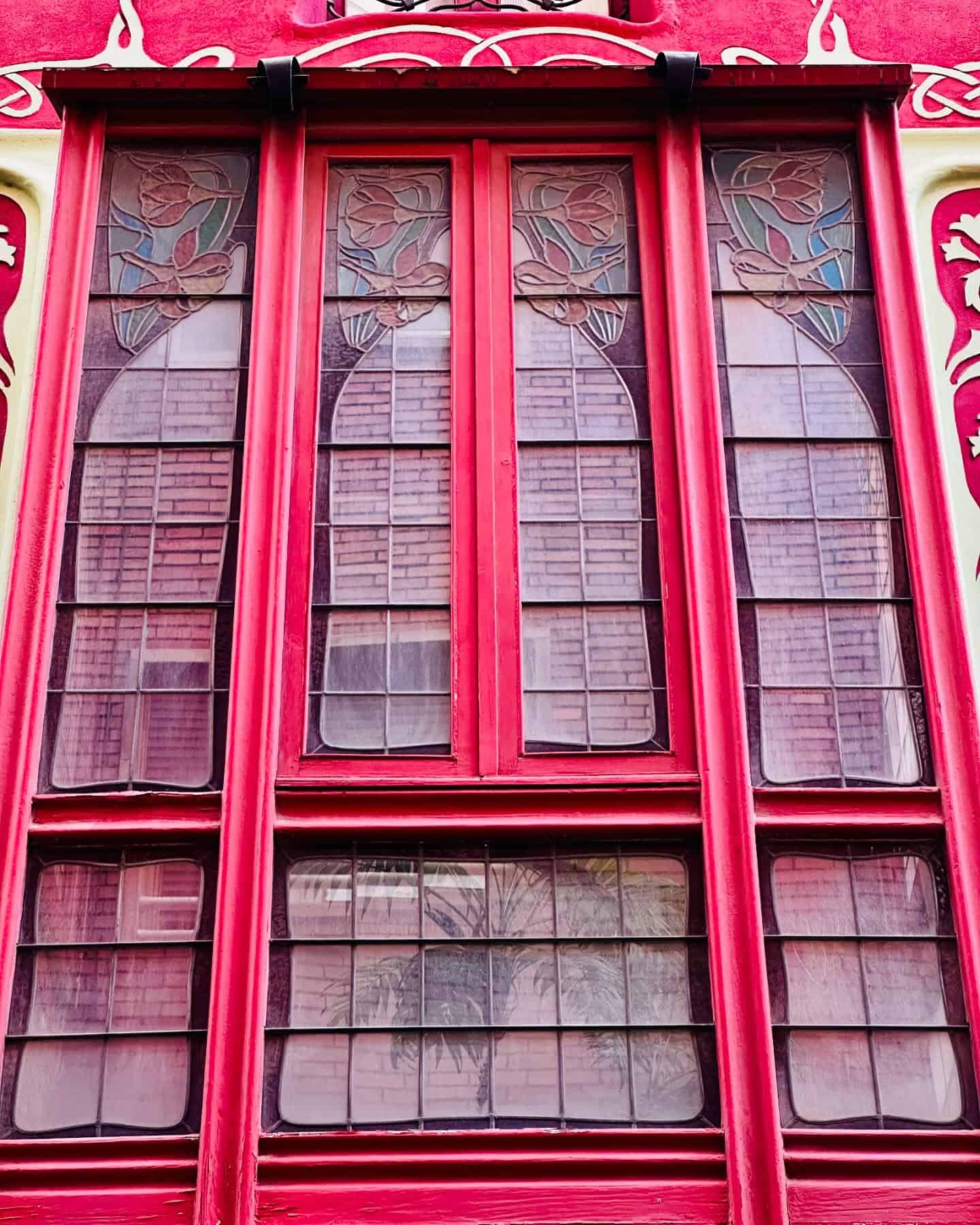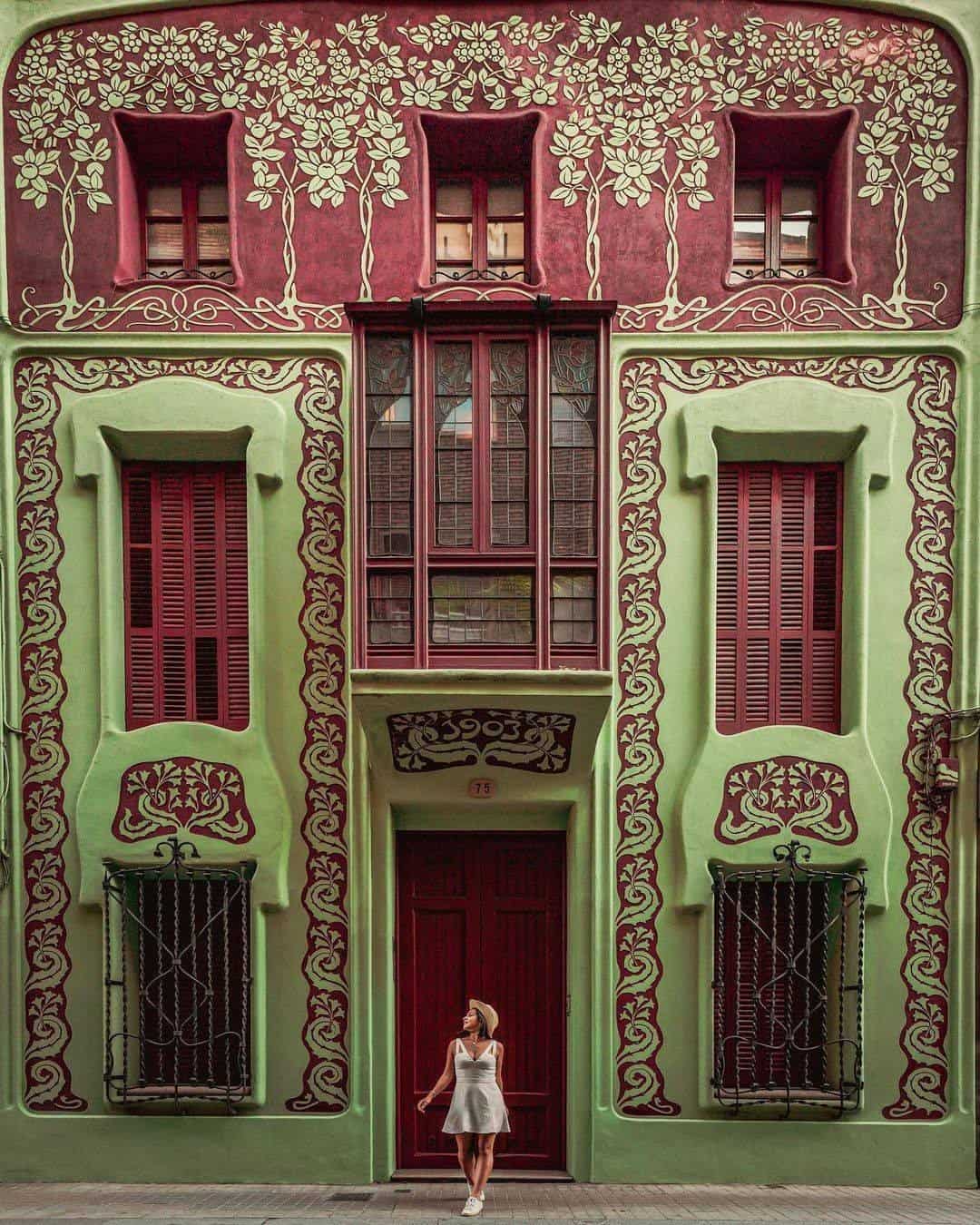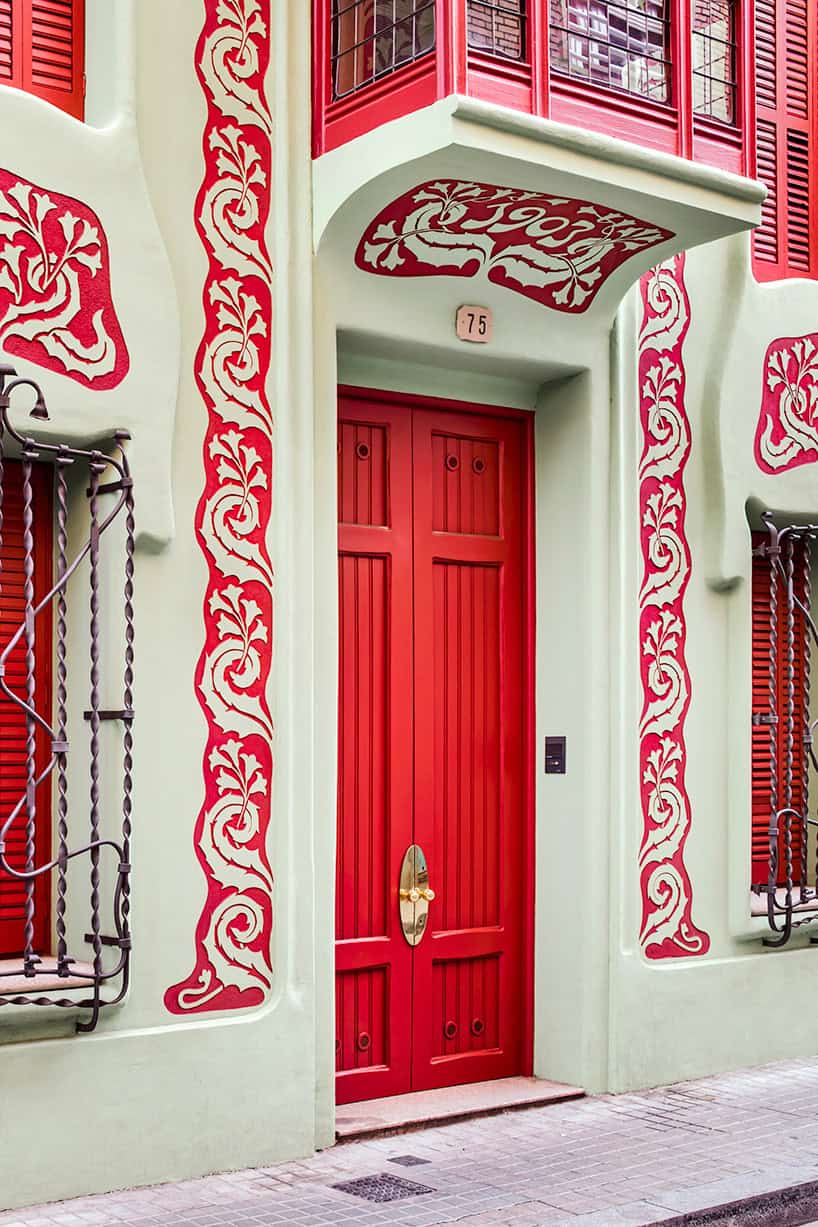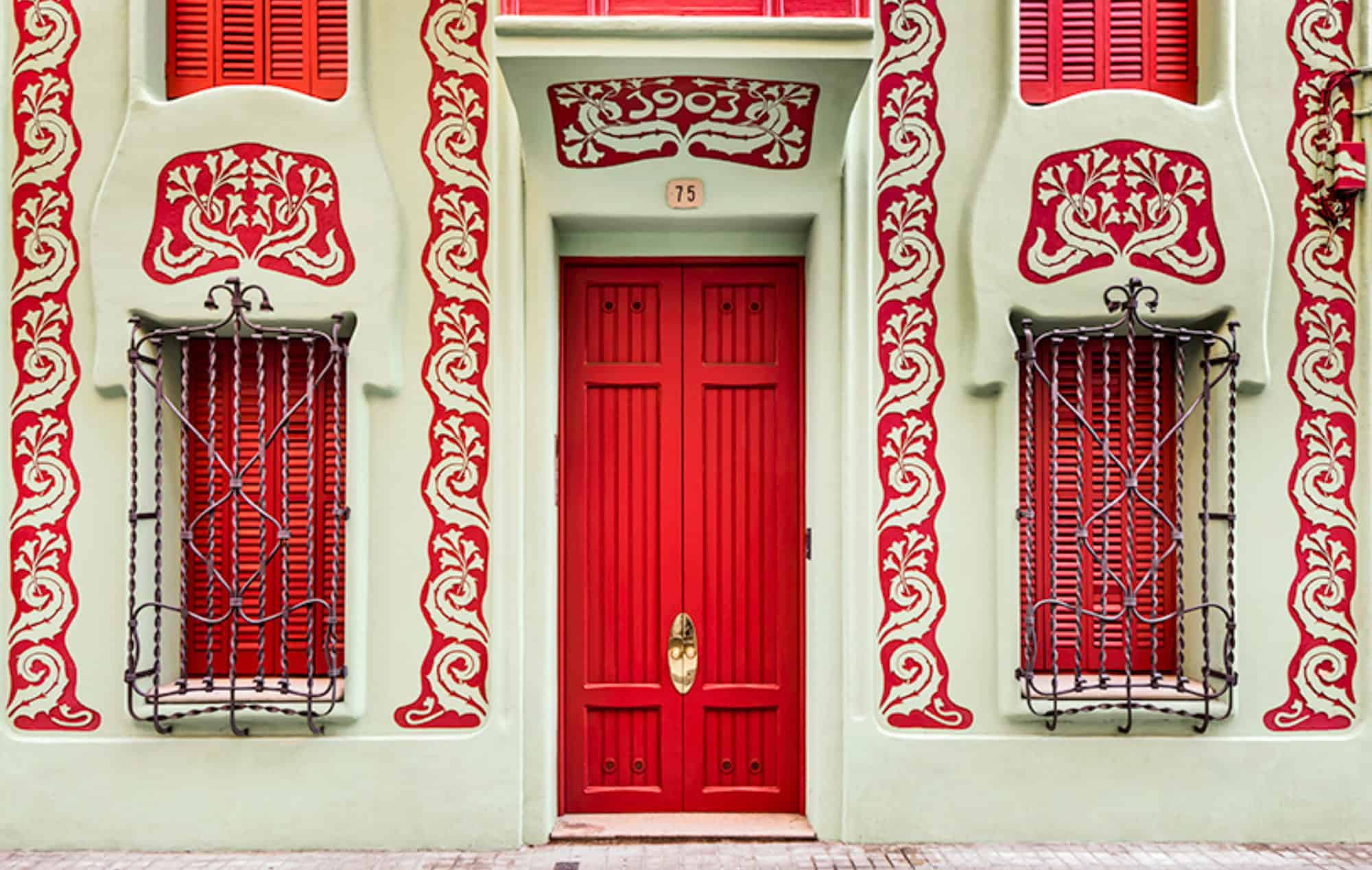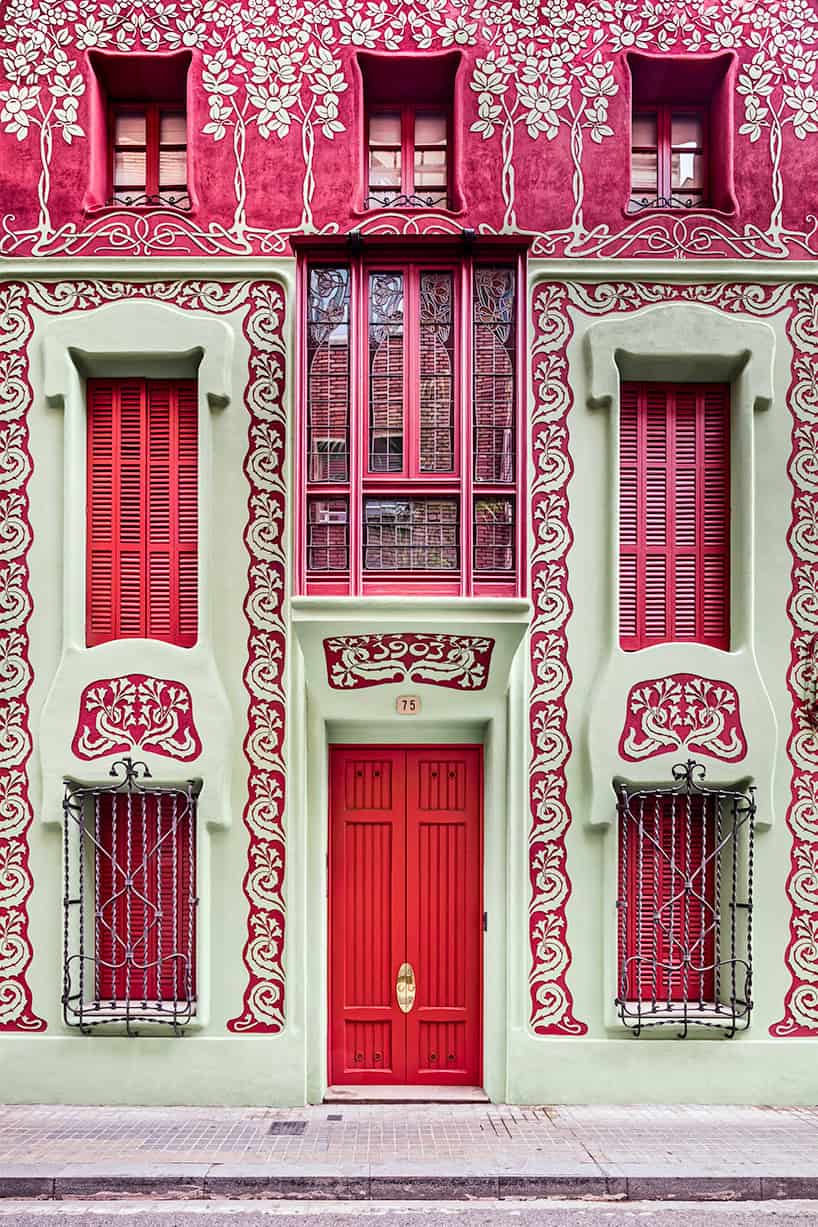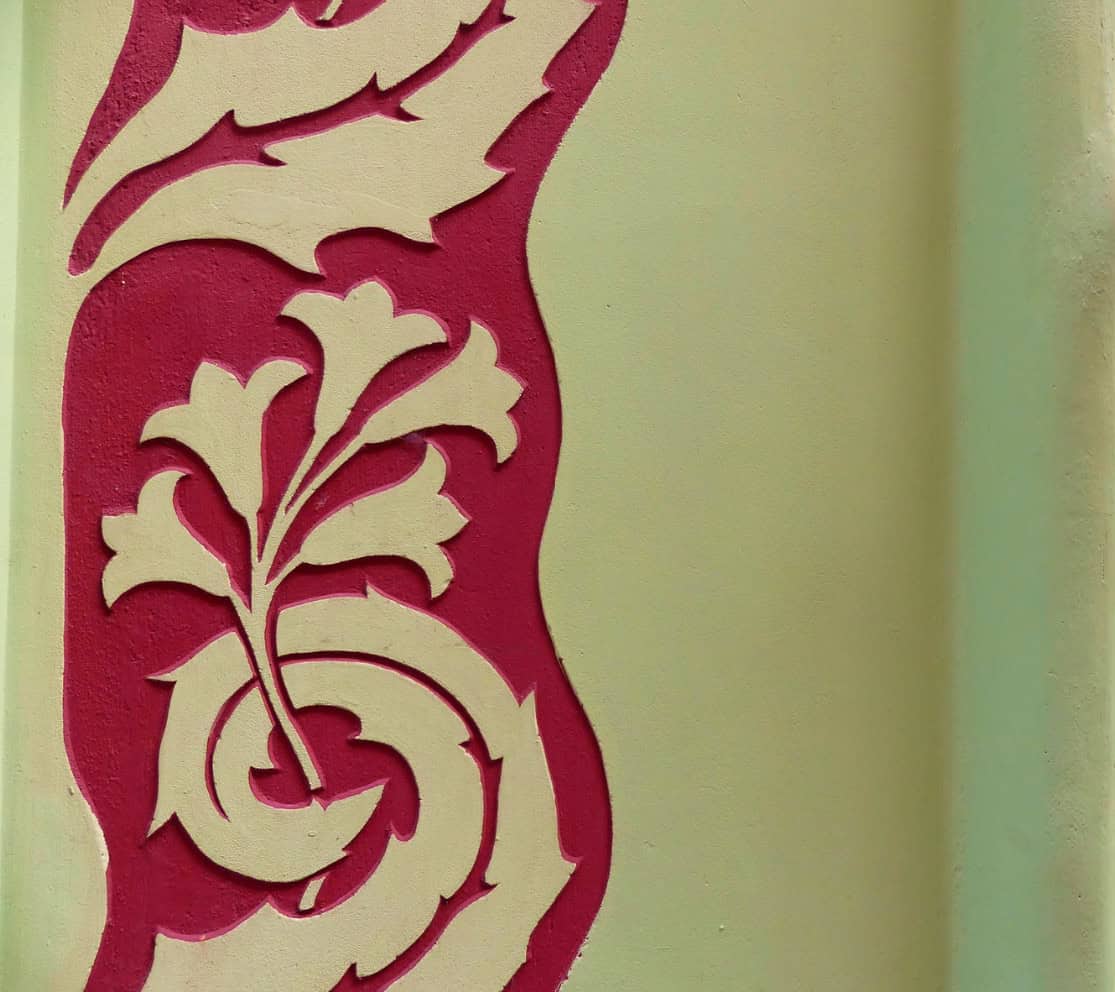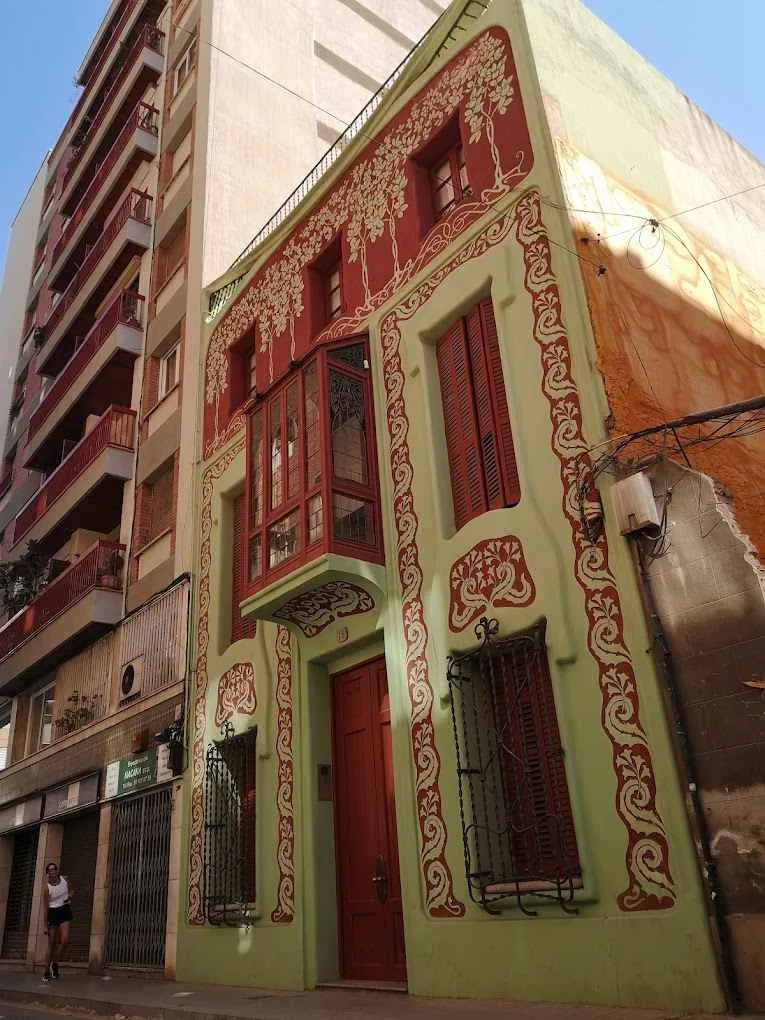Nestled in the heart of Barcelona, Building 75 on Padua Street is a hidden gem embodying the essence of Art Nouveau.
Designed by the renowned Jeroni Granell, this structure’s vibrant hues and intricate details captivate onlookers.
From its floral sgraffito to the stained glass balcony and wrought iron details, each element tells a story.
This building’s history as a perfume factory adds another layer to its charm, making it a fascinating subject for exploration.
1. The Visionary Architect
Jeroni Granell, the mastermind behind Building 75, was a visionary Catalan modernist architect.
Known for his stained glass work at Palau de Musica Catalana, Granell’s craftsmanship shines in this building.
His love for organic forms and vibrant colors is evident. The small house at 75 Padua Street showcases his signature style with sgraffito and stained glass windows.
Granell’s works, although unnoticed for years, deserve recognition for their beauty.
2. A Symphony of Colors
The exterior of Building 75 is a vibrant symphony of colors, with soft green and saturated red hues.
This striking façade was achieved using the sgraffito technique, where two contrasting colors are layered and scraped to reveal intricate patterns.
This method, common in Barcelona, adds a lively flair to the building.
Its colors, inspired by nature, create a stunning visual impact on passers-by, capturing the essence of Art Nouveau.
3. Floral Façade Fantasia
The building’s façade is adorned with exquisite floral sgraffito patterns, a hallmark of Art Nouveau design.
These intricate designs, with leaves and flowers, breathe life into the structure, merging art with architecture.
The natural motifs echo Granell’s appreciation for organic beauty, creating a visual harmony.
It’s no wonder the Essencias Buil perfume factory once operated here, inspired by these floral elements. This façade continues to enchant visitors.
4. Stained Glass Balcony
Stepping towards the building, a stunning enclosed balcony with stained glass windows captures attention.
These windows, a testament to Granell’s expertise, filter sunlight into colorful patterns inside. The glasswork, with its swirling designs, adds an elegant touch.
Looking at the balcony feels like peering into a kaleidoscope of colors. This feature, combined with wrought iron details, brings an air of sophistication to the house.
5. Wrought Iron Mastery
The wrought iron details in Building 75 exhibit true craftsmanship, intertwining strength with elegance.
These twisted grilles, featuring intricate Art Nouveau patterns, guard the windows with style. They complement the building’s organic motifs, adding texture to the façade.
The ironwork not only serves a practical purpose but also enhances the aesthetic, creating a seamless blend of art and functionality, delighting those who pass by.
6. The Perfume Era
During the 1970s, Building 75 served as the headquarters for Essencias Buil, a perfume manufacturer.
The choice of location was no coincidence. The floral exterior perfectly matched the essence of their products.
This era added a fragrant chapter to the building’s history, filling the air with delightful scents.
Though the perfume factory has since moved, the building retains a nostalgic charm, beckoning those interested in its fragrant past.
7. Restoration Celebration
In 1989, architect Alonso Balaguer took on the restoration of Building 75, breathing new life into its walls.
His efforts earned him the award for best restoration work, a testament to his skill and dedication.
The renovation transformed the interior, adapting it for modern living while preserving its historical charm.
The success of this project highlights the importance of preserving architectural heritage, ensuring its stories endure.
8. Symmetrical Street Beauty
Standing proudly at street level, Building 75 impresses with its symmetrical elevation. This balance in design is a delight to the eyes, drawing attention from every angle.
The vibrant façade, with its intricate details, enhances this symmetry.
It’s fascinating to see how such balance can bring harmony to the chaos of city life.
This architectural gem continues to attract those who appreciate the beauty of symmetry and design.
9. Modern Living Transformation
The interior of Building 75 underwent a complete transformation to meet modern living standards.
The renovation preserved the building’s historical elements while incorporating contemporary amenities.
Open spaces, filled with natural light, create a welcoming atmosphere, merging the past with the present.
This blend of history and modernity ensures the building remains a desirable residence. It’s a testament to the timeless appeal of thoughtful design.
10. The Enigmatic Casa Pàdua
Locally known as Casa Pàdua, Building 75 harbors an enigmatic charm that intrigues all who encounter it.
Despite its renovations, the building’s mysterious aura persists. As twilight descends and lights illuminate its façade, the house transforms into a beacon of allure.
Its rich history, combined with its architectural beauty, makes it a captivating subject for exploration.
Casa Pàdua leaves a lasting impression on the heart of Barcelona.

